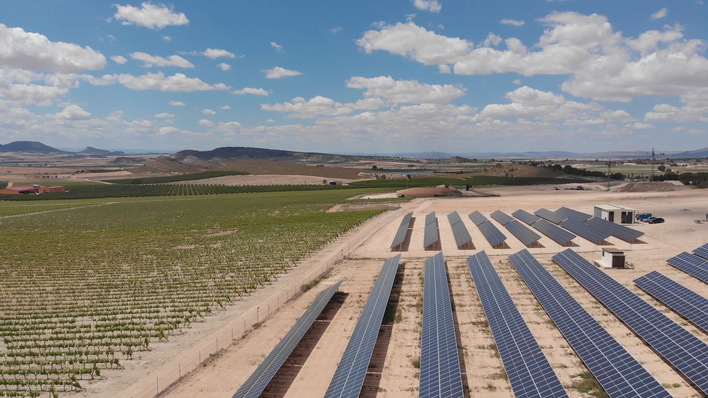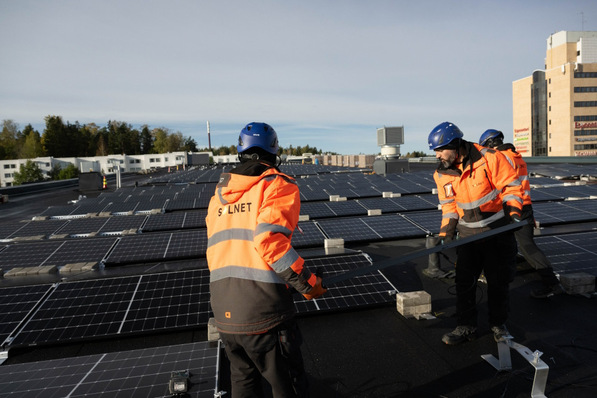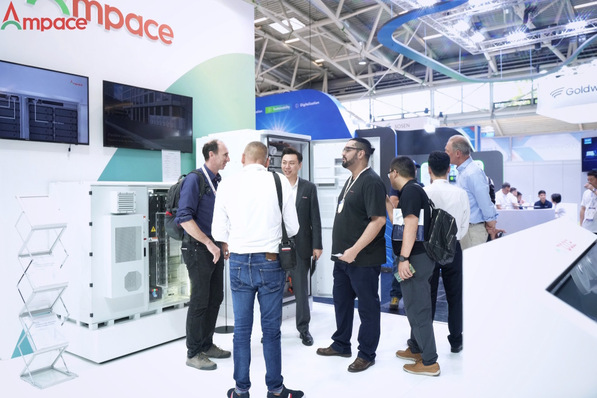Tesvolt is one of the leading companies that offer lithium ion storage systems for commercial use and utility scale. The commercial storage system Tesvolt is made of batteries up to 120 kilowatt hours of storage capacity. Some systems might be expanded to reach higher capacity. The utility scale storage systems range up to three Megawatt hours, as recently contracted in inner Africa. “We have stopped building lead acid storage units altogether,” Daniel Hannemann, CEO of Tesvolt says.
Farewell to lead acid technology
Initially, Tesvolt started out in lead acid technology and gathered extensive experience in large-scale storage systems. Nowadays, they exclusively use lithium iron phosphate batteries. “The price advantage of lead batteries is no longer significant in high-performance commercial applications. They are now only 15 to 20 percent cheaper than batteries made with lithium iron phosphate,” Simon Schandert says. He is head of engineering at Tesvolt. “You can only half discharge a lead acid cell, so in effect you need twice the gross capacity compared to lithium storage systems. If you factor in their considerably greater number of charging cycles, lithium iron phosphate batteries make much more sense, economically.”
Tesvolt buy in their high-performance cells from an Asian producer that also makes batteries for electric cars and busses as well as boats and telecoms back-up systems. The power electronics units are based on SMA’s (Sunny Island) charging controller.
High level of efficiency for the overall system
The battery is managed and controlled using an app on a tablet. It is connected through Bluetooth and constantly gets updated with operational data. If a cell weakens, the app will show that immediately. “We are also able to selectively move energy from one cell to another,” Simon Schandert says. “This not only allows us to charge and discharge quickly and seamlessly, we also achieve an extremely high level of efficiency for the overall system.”
The storage system can be expanded to up to four battery cabinets with up to three Sunny Islands (for example, 240 kilowatt hours at 18 kilowatts of charging capacity from three Sunny Islands 8.0H units). The units started to be sold at the Intersolar in June of 2015, one year ago. Until now the demand has not slackened since. First enquiries are also coming in from Austria, Switzerland and Italy.
Tesvolt’s storage unit makes use of 80 to 83 percent of the energy. So far, 70 to 76 percent has been the standard for lithium batteries. The reason why Tesvolt collaborates so closely with SMA is that the Sunny Island has an almost unbeatable advantage: The efficiency stays nearly constant at 92 percent from very low partial loads of 5 percent all the way to full load. Other inverters often show much higher losses, especially at partial load. That is why Tesvolt storage units can achieve 83 percent efficiency under real-life conditions.
Designed like an off-grid system
Furthermore, the Sunny Island has an emergency back-up function and off-grid capability. The UK and Russia have strict ordinances regulating that storage units must not feed electricity back into the grid, but have to run in zero-feed-in mode. “So you have to design this unit like an off-grid system,” Schandert explains. “In off-grid mode, the three inverters can produce up to 900 amperes of current. The battery has to be able to deal with that.”
The battery management system has been certified by the TÜV Rheinland. Until the end of the year, the unit should also have earned all other tests and certificates that the safety guidelines require.
In Europe, such storage units are deployed in agriculture or in small enterprises. A dairy farmer in northern Germany uses batteries to run his milking parlour on solar energy. Cows are usually milked in the early morning between 5 and 6 o’clock and again in the late evening after 7.
While refrigeration and the feeding system are the base load, the mechanic milking system generates a significant load spike – just at times of day when PV not yet or no longer produces electricity. “In that case, the storage unit acts like a phase shifter,” Simon Schandert explains. In combination, PV and commercial storage are much more economic than a solar generator by itself.”
In Russia, for the first time storage units do not run in combination with PV systems, but in tandem with cogeneration plants. The Sunny Island can deal with any kind of generator. One of Tesvolt’s partners is a Russian builder of cogeneration plants whose power consumption sank due to the storage unit and using fuel more efficiently.
Tesvolt grants the usual product warranty of two years, a cell value replacement warranty lasting seven years and the performance warranty for ten years. Return and recycling is free, in accordance with the relevant regulations for batteries.
Once a month, Tesvolt trains 30 technicians in correctly setting up the Li storage units. “Commercial storage opens up a whole new market segment,” Daniel Hannemann is certain. “We see great opportunities in the area of petrol and service stations, in supermarkets, hotels, manufacturing companies and in agriculture.” (HS/IR)
Did you enjoy watching "Moving the markets: The Tesvolt commercial energy storage system sets a benchmark for the new technology”? Then also find out which opportunities Andreas Piepenbrink, the CEO at E3/DC sees for the energy storage market, or read the exclusive interview with Santiago Senn, director of LG Chem Europe on pv Europe in which he discussed innovation in storage systems, markets and distribution.






